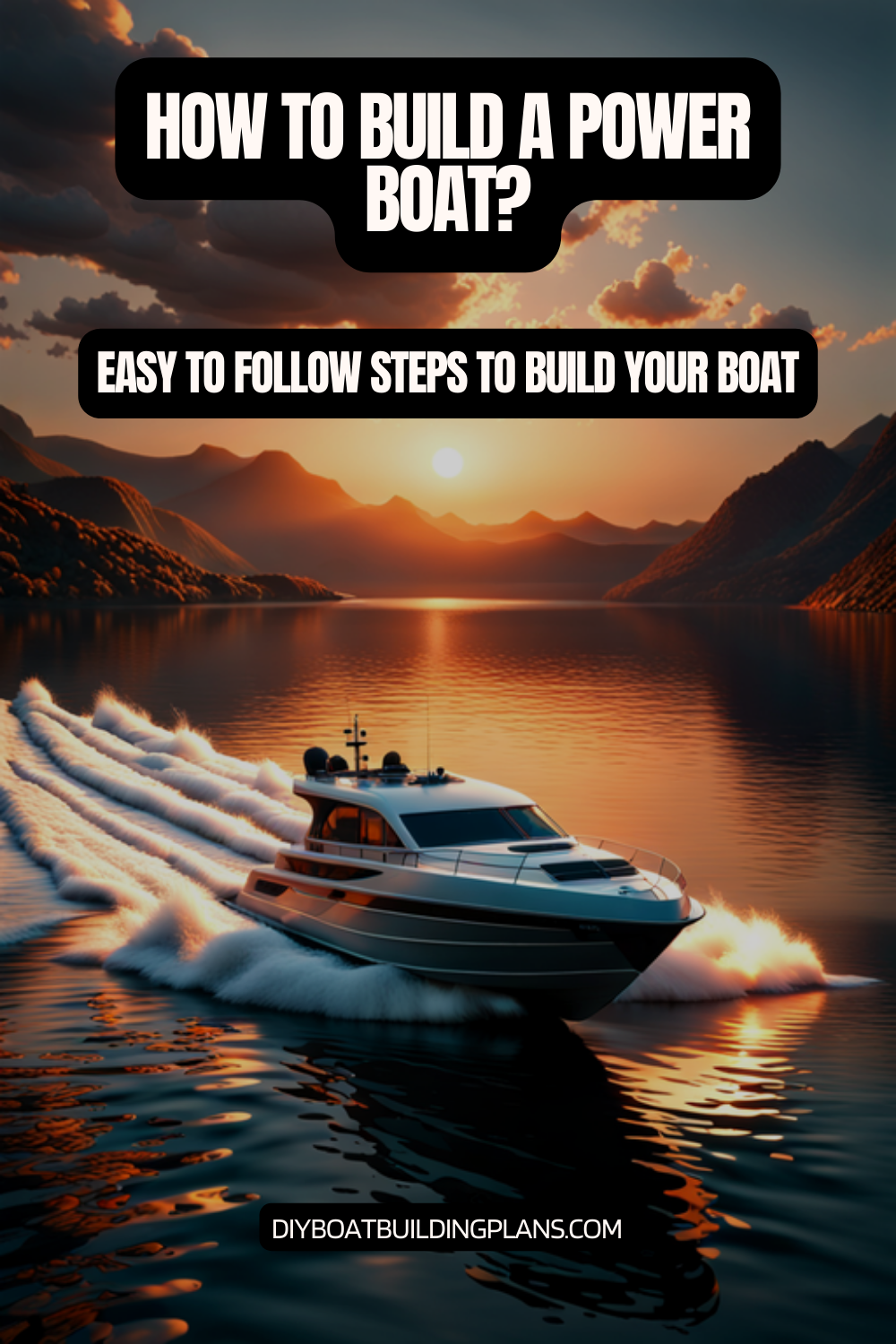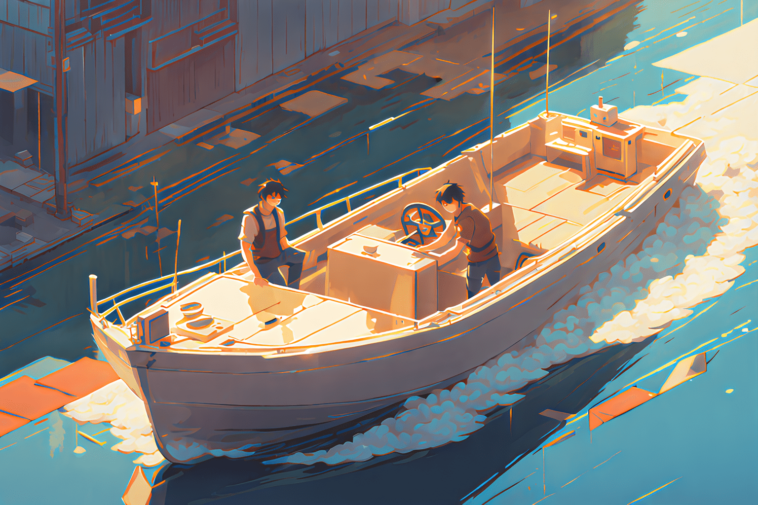Overview of How To Build a Power Boat
When it comes to building a power boat, the first and most crucial step is to determine the intended use of the vessel. This decision will heavily influence the design and size of the boat, as different applications require varying performance characteristics. Factors such as speed, range, and carrying capacity must be carefully considered to ensure the boat meets the user’s needs.
Another important aspect to evaluate is the water conditions and environment where the boat will be primarily used. Factors like wave height, current, and water depth can significantly impact the boat’s performance and handling. By understanding the specific requirements of the intended operating area, you can select the appropriate hull design and size to optimize the boat’s capabilities.
Once the intended use and operating environment have been established, the next step is to select the appropriate size and hull design. The length, beam, and draft of the boat are all critical factors that must be carefully balanced. Longer boats generally offer greater stability and range, while shorter boats may be more maneuverable and easier to transport. The hull shape, such as a V-hull, flat-bottom, or catamaran, also plays a significant role in the boat’s performance characteristics, affecting factors like speed, fuel efficiency, and handling. Understanding the trade-offs between different hull designs is essential to making an informed decision that aligns with the boat’s intended use.
Key Takeaways
- Choose the right design and size for your power boat based on your needs and preferences.
- Select appropriate materials for construction, such as fiberglass or aluminum.
- Construct the hull and deck carefully to ensure durability and safety.
- Install a reliable propulsion system, such as an outboard motor or inboard engine.
- Outfit your boat with necessary accessories, such as navigation equipment and safety gear.

Selecting the Appropriate Materials
The choice of materials used in the construction of a power boat is a crucial decision that can have a significant impact on the boat’s performance, durability, and overall cost. Common materials used in boat building include fiberglass, aluminum, and wood, each with its own unique strengths, weaknesses, and cost considerations.
Fiberglass is a popular choice for power boat construction due to its strength, lightweight, and relatively low cost. It can be molded into a wide range of hull shapes and is resistant to corrosion, making it a durable option for marine environments. Aluminum, on the other hand, is known for its strength-to-weight ratio and corrosion resistance, making it a popular choice for larger, high-performance boats. Wooden boats, while often considered more traditional, can offer a unique aesthetic and can be highly customizable, but they may require more maintenance and can be more susceptible to environmental factors.
In addition to the materials used for the hull and deck, it is also essential to select the appropriate hardware and fittings for the boat. These components, such as cleats, hinges, and fasteners, must be marine-grade and suitable for the intended use of the boat. Factors like corrosion resistance and weight should be carefully considered to ensure the boat’s overall performance and longevity.
Constructing the Hull and Deck
The construction of the hull and deck is a critical step in the power boat building process, as these components form the foundation of the vessel. The specific techniques used will depend on the materials chosen and the desired design, but the overall goal is to create a structurally sound and watertight boat.
For boats constructed using molding techniques, such as fiberglass or composite materials, the process typically involves creating a mold, layering the materials, and then curing the hull and deck. This method allows for a high degree of precision and consistency in the final product. Alternatively, boats made from materials like aluminum or wood may be constructed using welding or traditional boat-building methods, such as planking or lapstrake construction.
Regardless of the construction method, it is essential to ensure that the hull is structurally sound and watertight. This may involve reinforcing key areas, such as the keel and chines, and carefully sealing all joints and seams. The deck, in turn, must be designed and built to integrate seamlessly with the hull, providing access points, storage, and seating as needed to meet the boat’s intended use.
Installing the Propulsion System
The propulsion system is the heart of a power boat, responsible for providing the necessary thrust to move the vessel through the water. Selecting the appropriate engine and drive system is a critical decision that must take into account factors such as power output, fuel efficiency, and maintenance requirements.
When choosing the engine, it is important to ensure that it is properly sized and matched to the boat’s weight, hull design, and intended use. Factors like horsepower, torque, and fuel consumption should be carefully evaluated to optimize the boat’s performance and efficiency. Additionally, the drive system, which includes the propeller, shaft, and transmission, must be selected to work in harmony with the engine and provide the desired level of control and maneuverability.
Integrating the steering and control systems is another essential aspect of the propulsion system installation. The steering mechanism, throttle, and other controls must be carefully designed and installed to ensure seamless operation and responsiveness. This may involve the use of hydraulic or electronic systems, depending on the complexity of the boat and the desired level of control.
Outfitting the Boat with Accessories
| Step | Description |
|---|---|
| 1 | Design the boat using CAD software |
| 2 | Choose the materials for the hull and deck |
| 3 | Cut and shape the materials according to the design |
| 4 | Assemble the hull and deck using epoxy and fiberglass |
| 5 | Install the engine, steering, and electrical systems |
| 6 | Paint and finish the boat |
| 7 | Test the boat on water for performance and safety |
Beyond the core components of the hull, deck, and propulsion system, a power boat can be further enhanced with a variety of accessories and equipment to improve its functionality, safety, and comfort.
Navigational and safety equipment are essential for any power boat, regardless of its intended use. This may include items such as a GPS system, depth finder, and life jackets, all of which must be properly installed and integrated to ensure the boat’s safe operation. Ensuring that all required safety equipment is in place and in good working order is a critical step in the boat-building process.
In addition to the necessary safety and navigational equipment, power boats can also be outfitted with a variety of creature comforts and amenities to enhance the user experience. This may include features like comfortable seating, storage compartments, and even entertainment systems. The layout and design of these features should be carefully considered to ensure they are practical, user-friendly, and integrated seamlessly with the overall boat design.
Ensuring Proper Buoyancy and Stability
Maintaining proper buoyancy and stability is a crucial aspect of power boat design and construction. Calculating the boat’s weight and load capacity is the first step in this process, as it is essential to understand the maximum weight the boat can safely carry without compromising its performance or safety.
Determining the weight distribution is also critical, as an imbalance can significantly affect the boat’s stability and handling. Factors like the placement of the engine, fuel tanks, and other heavy components must be carefully considered to ensure the weight is evenly distributed and the boat remains properly trimmed.
To maintain buoyancy and stability, various measures may be implemented, such as the installation of flotation devices and the use of ballast systems. These features help to ensure the boat remains afloat and stable in a variety of conditions, from calm waters to rough seas. Regular testing and adjustments may be necessary to fine-tune the boat’s performance and ensure it meets the desired safety and handling standards.
Finishing Touches and Painting
The final stages of power boat construction involve the preparation and application of the boat’s exterior finish, which not only enhances the visual appeal of the vessel but also provides critical protection against the harsh marine environment.
Preparing the boat’s surfaces for painting is a meticulous process that typically involves thorough cleaning, sanding, and the application of appropriate primers and sealants. This step ensures a smooth, even surface that will allow the final paint or coating to adhere properly and provide long-lasting protection.
When selecting the paint or coating, it is essential to choose a marine-grade product that is specifically designed to withstand the rigors of the marine environment. These materials are typically formulated to be durable, resistant to UV exposure, and capable of maintaining their appearance and integrity over time. The application process must also be carefully executed to achieve a smooth, even finish that enhances the overall aesthetic of the boat.
Testing and Troubleshooting
Once the power boat has been constructed and outfitted with all the necessary components, it is essential to conduct thorough testing and troubleshooting to ensure the vessel is functioning as intended and meets all safety and performance standards.
The sea trial phase is a critical step in this process, as it allows the boat to be evaluated under real-world conditions. During these trials, the boat’s handling, speed, and overall functionality can be assessed, and any issues or problems can be identified and addressed.
In the event that any mechanical or electrical problems arise during the testing phase, it is crucial to have a well-defined troubleshooting process in place. This may involve diagnosing the issue, identifying the root cause, and making the necessary adjustments or repairs to ensure the boat is operating safely and efficiently. Maintaining detailed records of any issues and the steps taken to resolve them can also be valuable for future reference and maintenance.
Launching and Maintaining Your Power Boat
The final step in the power boat building process is the launch and initial use of the vessel, followed by the ongoing maintenance and care required to keep it in top condition.
Preparing the boat for launch and initial use involves ensuring that all necessary safety and legal requirements are met, such as the installation of appropriate safety equipment and the acquisition of any necessary licenses or permits. It is also essential to familiarize oneself with the boat’s operation and handling, as this knowledge will be crucial for safe and enjoyable use.
Maintaining the power boat over time is a critical aspect of ownership, as it helps to preserve the vessel’s performance, appearance, and value. This may involve the development of a regular maintenance schedule, which could include tasks such as engine servicing, hull cleaning, and the replacement of worn or damaged components. Addressing any issues or problems promptly is also essential, as neglecting maintenance can lead to further damage or deterioration.
By following a comprehensive approach to power boat building, from the initial design and material selection to the final testing and maintenance, boat owners can ensure that their vessel meets their needs, performs reliably, and provides years of enjoyment on the water.
Download over 500 Boat Plans. Click on the link below.
-->Click Here<--

Conclusion – How To Build a Power Boat
Building a powerboat is a rewarding and enjoyable project that allows you to create your own customized and cost-effective vessel. However, it also requires a lot of research, planning, preparation, and skill. In this article, we have guided you through the main steps of powerboat building, from planning and designing to building and testing. We have also provided some tips and resources to help you overcome the common challenges and ensure the safety and performance of your powerboat.
We hope this article has inspired you to pursue your powerboat building dream and given you the confidence and knowledge to do so. Remember, powerboat building is not only a technical process, but also a creative and personal one. You can design and build your powerboat according to your own preferences, needs, and goals. The only limit is your imagination.
So, what are you waiting for? Grab your tools and materials, and start building your powerboat today. You will be amazed by what you can achieve.
FAQs – How To Build a Power Boat
What materials are needed to build a power boat?
The materials needed to build a power boat include marine-grade plywood, fiberglass, epoxy resin, marine-grade paint, stainless steel screws, and marine-grade vinyl.
What tools are required to build a power boat?
The tools required to build a power boat include a jigsaw, circular saw, drill, screwdriver, sander, and a heat gun.
What is the process for building a power boat?
The process for building a power boat involves designing the boat, cutting and assembling the plywood, fiberglassing the hull, installing the motor and electrical components, and painting and finishing the boat.
How long does it take to build a power boat?
The time it takes to build a power boat depends on the size and complexity of the boat. A small power boat can take a few weeks to build, while a larger boat can take several months.
What is the cost of building a power boat?
The cost of building a power boat varies depending on the size and materials used. A small power boat can cost a few thousand dollars to build, while a larger boat can cost tens of thousands of dollars.
Do I need any special skills to build a power boat?
Building a power boat requires some basic woodworking and fiberglassing skills. It is recommended that you have some experience with power tools and boat building before attempting to build a power boat.



